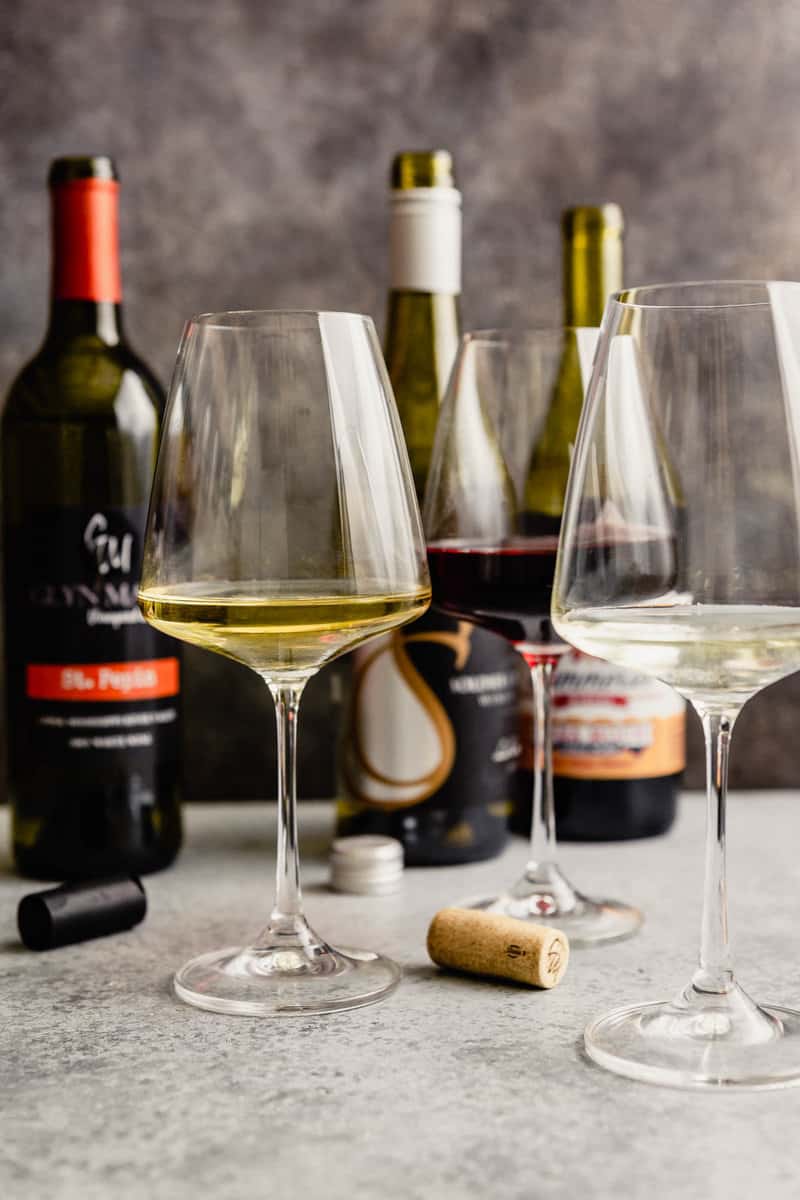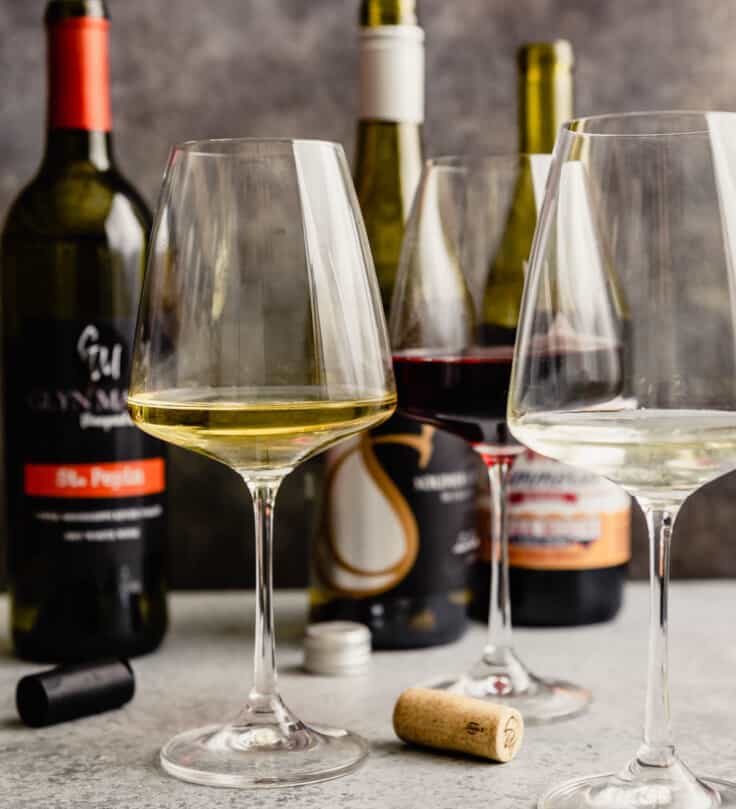Nuanced bottles of wine are the sweet results of the hard work wine-making requires in Iowa. Something equally as sweet is the small community of winemakers who uplift and bring others along with them. Drinking Iowa wine is much more than a glass of great wine, it’s history, hard work, supporting local makers and growers, and inspiring badass women.

1. It’s Not Easy to Grow Grapes In Iowa
When you think of wine destinations you likely don’t consider Iowa a notable one. And for very logical reasons. With a colder climate than most well-known wine-making regions, Iowa doesn’t lend itself to being an easy place to grow grapes.
The interesting, and very obvious, thing about Iowa—it has some of the best soil on earth. The dark rich soil of Iowa is ideal for crops, which isn’t surprising considering one of Iowa’s largest industries is farming. Where Iowa lacks in temperate climate, it makes up in soil. At least that’s what us Midwesterners tell ourselves.
Vines grown in Iowa seem to, “grow overnight,” says Anna Wilson, co-owner of Glyn Mawr Winery in Mount Vernon Iowa. “I agree, we call our vineyard a jungle during growing season,” says Anne Zwink of Soldier Creek Winery in Fort Dodge Iowa.
It’s not easy to grow grapes and produce wine in Iowa. The cold, and often wet, climate in Iowa can make it challenging to grow grapes to their full potential. The types of grapes grown in Iowa are much different than those grown in California. Hardy, cold-weather varietals such as La Crescent and Frontenac, which can withstand super cold temperatures and still come back the following year, are the only types of grapes that can be grown in Iowa.
2. Not All Iowa Wines Are Sweet
Iowa wines often get a reputation for being overly sweet, and some certainly can be, but that’s largely due to added sugar used for balancing the natural tartness of cold-weather grape varietals. Additionally, many Iowa wines smell sweet because they have fruity, often tropical aromas. But if you’re a wine drinker, you know smell is only one part of the flavor equation. It’s common for Iowa wines to have a sweet nose but a crisp, tart flavor.
Plus, the young class of winemakers entering the Iowa landscape are beginning to embrace the tart, crisp grapes and are creating more off-dry and dry varieties.
If you love sweet wine, Iowa has a lot of options for you, most notably Summerset Winery’s Caba Moch or “party in a bottle.” Caba Moch is a blush-style wine blended from Catawba and Marechal Foch grapes and is reminiscent of sangria. A porch-sipper for sure.
And if you prefer a drier, more minerally wine like a Sauvignon Blanc, be sure to try Soldier Creek’s La Crescent which is compared to Vinho Verde.
3. When You Buy Iowa Wine You Support Local
When you buy a bottle of wine from an Iowa winery, you’re not just giving your business to the winery—especially if you’re buying from Glen Mawr. Grapes are one of the few crops in Iowa that hasn’t seen an increase in price over the last 50 years. Wilson explained that with such a short growing season, many people grow grapes as a side hustle or retirement plan. “We know teachers who do this during the summers, it’s not easy to grow grapes in Iowa, they work hard and they deserve to get paid for that.”
4. Many Women Are Pioneering The Industry
The wine industry in Iowa is largely being run and operated by women. When I recently sat down with three female winemakers for a virtual wine tasting, it was evident how much they value women in the industry. Anna Wilson and Brenda Broulik, the mother-daughter duo who own and run Glen Mawr Winery, have been planting, harvesting, wine making, and hand-labeling and corking for 12 years.
Soldier Creek Winery in Fort Dodge is family-owned and operated with Anne Zwink, food scientist and award-winning winemaker, at the helm.
Summerset Winery in Indianola, one of the oldest and largest wineries in the state, is family-owned and features a bustling tasting room largely run by women. With large crowds gathering for live music in the summer and frequent weekend events, the tasting room rarely sees a quiet moment.
5. Wine Making is Not New for Iowa
Grapes have been grown in Iowa since as early as 1887, with Iowa being noted as one of the biggest grape producers in the late 1890s. Just before prohibition, Iowa ranked 6th in the nation for wine production and was home to a number of commercial vineyards and wineries long before many well-known grape-growing states today.
A shift in agricultural focus to row crops and a record blizzard in 1940 did a number on Iowa grape vines. During the mid-1940s nearly all of Iowa grapes were wiped out.
It wasn’t until 2000 that Iowa experienced a period of revitalization thanks to a combination of interest and the formation of the Iowa Wine Growers Association which today serves as representation for growers and producers.

Iowa Wine Varietals to Keep an Eye Out For:
- La Crescent
- Marquette
- Frontenac
- St. Pepin
Iowa Wines to Try & Food Pairings
Summerset: Caba Moch
This sweet bottle of wine is great for hot summer days. Serve with creamy coconut curry.
Glyn Mawr: St. Pepin
Reminiscent of a Sauv Blanc, this minerally wine is great with grilled chicken or salmon atop a fresh green salad.
Soldier Creek: 2019 Vintage of Le Crescent
Aromatic, bright and crisp, this bottle of wine is super versatile and pairs wonderfully with fish tacos.
Learn more about Iowa wine and beer—everything from events, trails, tours and more!
This is a sponsored post written by me on behalf of Travel Iowa. All opinions are 100% mine.

La Crescent is absolutely delicious, and you’re right – it’s zesty and refreshing, similar to a crisp, aromatic Sauv Blanc. I’ tried a sparkling version that I loved, as well. As we see more dramatic swings in weather patterns, cold-hardy varieties like this one will gain traction and broader recognition. I’ll have to try some of these!
I am now on the hunt for more La Crescent! I love how you describe it as zesty—so delicious. I’m intrigued by the sparkling version, that sounds fabulous! I hadn’t considered how important these varieties will be moving into the future with unpredictable weather and temps—such an interesting thing to start thinking about and planning for!